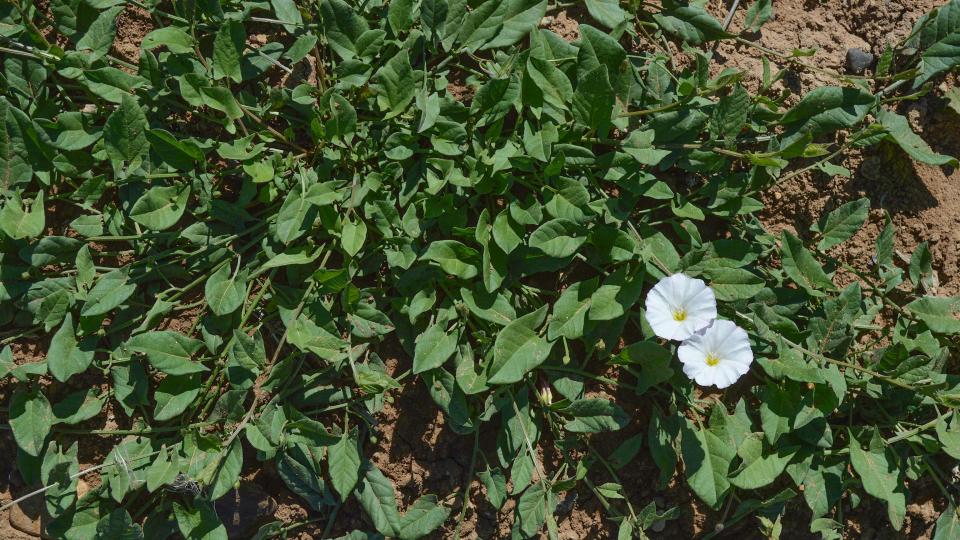Scientists Help Break Down the Weed Control Dilemma for Vegetable Growers
As each year passes, weed control is a larger and larger burden to U.S. vegetable growers. For the first time, respondents to American Vegetable Grower’s State of the Vegetable Industry survey rank the issue in the top five (No. 4) among their biggest concerns this year. That outperformed other hot issues like government regulations and the economy.
“I completely agree with your readership that the weed problem in their farms is worsening,” says Rakesh Chandran, a West Virginia University Extension Specialist with expertise in weed science.
“Yes, the weed situation is by far the worst it has been in the nearly three decades that I’ve worked in this area,” Jed Colquhoun, IPM Program Director, University of Wisconsin-Madison, concurs.
Point taken. The question then becomes: Are the weeds themselves the problem? Or does the issue stem from determining how to eradicate those weeds effectively and economically?
“This is a very dynamic question that I believe is influenced by factors other than simply a given weed infesting a crop,” says Stanley Culpepper, a University of Georgia Extension Weed Scientist.
What are those factors?
Labor
Labor is the No. 1 concern among American Vegetable Grower readers because it affects almost every aspect of farming, including weed control.
“I can’t speak on this nationally, but here in California I would say the survey is reflecting more the cost and availability of labor for weed management,” Scott Stoddard, a Farm Advisor with the University of California Cooperative Extension (Merced), says. “So, (it’s) the hand-weeding crews rather than weeds suddenly being more of a problem in themselves.”
Because few registered herbicides apply to vegetable crops regardless — “they trickle down from the agronomic crops,” Stoddard notes — the industry relies heavily on cultivation and hand weeding to manage weeds, he says.

Field bindweed runs rampant in California tomato fields.
Photo by Howard F. Schwartz
Herbicide Resistance
“Herbicide resistance is simply out of control,” Colquhoun says. “Over reliance on [the] few modes of action has been selected for resistant weeds. More recently, metabolic resistance has been identified in several common species, where weeds can be resistant to herbicides that have never been sprayed on them by amplifying general enzymes that metabolize or ‘digest’ herbicides and other toxins within resistant plants.”
As a result, Colquhoun adds, you can find resistance to several modes of action within an individual weed plant — “in fact, sometimes to more modes of action than we have registered in most of our vegetable crops,” he says.
In turn, this could affect growers’ perceptions that, statewide or nationwide, the weed situation is worsening, Marco Pena, an Assistant in Extension with the University of Arizona says.
“In our area we have experienced occasional introductions of new invasive species. Growers and pest control advisors as well as university researchers work together to develop strategies for best management,” Pena says. “Arizona growers are doing a great job in keeping the most common weeds under control.”
Climate Change
Colquhoun also cites climate change as a reason for weed prevalence.
“Variable weather, ranging from too dry for conventional residual herbicides to be effective to too wet to allow organic producers to cultivate, allow weeds to escape management and produce abundant seed,” Colquhoun says. “A few years in a row of poor control can exponentially increase weed seed in the soil seed bank.”
Methyl Bromide MIA
In Georgia, according to Culpepper, the number of herbicides available to help growers in traditional vegetable weed management programs has increased significantly for many crops through the efforts of research by academics, IR-4, regulatory agencies, and manufacturers.
“Currently in several of our crops we potentially have the best weed management programs that we have ever had,” he says. “However, we definitely have not been as successful replacing methyl bromide and are struggling, especially with costs and application procedures with our fumigants.”
Meanwhile, for organic producers, Culpepper says there is no question that weed control is a “mighty task,” especially with labor challenges, fuel costs, and environmental conditions, “especially in our part of the world.”
No, It’s the Weeds
In at least one case, the weed actually is more prevalent than ever, according to Stoddard.
“An exception is field bindweed, which is certainly worse in tomatoes now than it was 20 years ago,” he says. “This is likely a result of drip irrigation, which is used for almost all the tomato acres but also in the rotation crops, like corn, cotton, melons, sunflowers, and others.”










